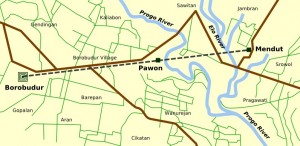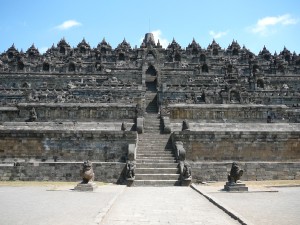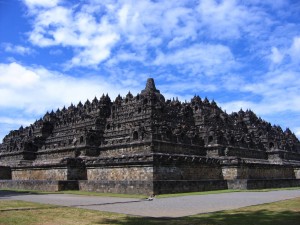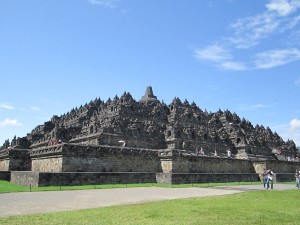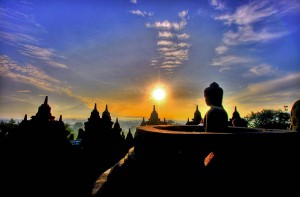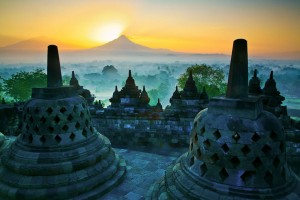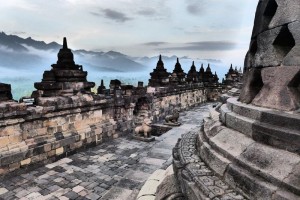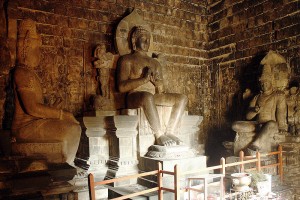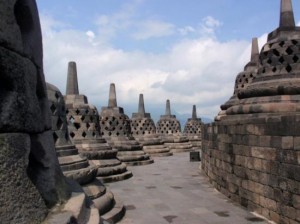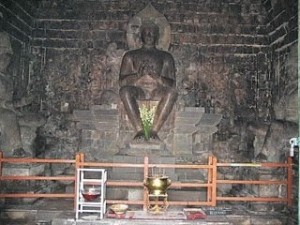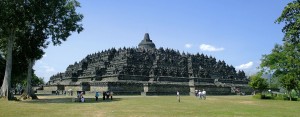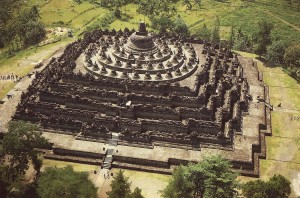Written by Soudip
August 23rd 2014Other Places
You Are Here
Home > Indonesia > Prambanan Temple Historical Facts and PicturesBorobudur Temple Historical Facts and Pictures
Central Java and the adjacent islands are known for the array of Buddhist and Hindu temples of great archeological value – one of which is the ancient temple of Borobudur. There remains controversy over the claim and origin of this temple. Considered to have been established by Sailendra dynasty around 790 CE, this temple remains as an embodiment of the amalgamation between old charming local artistry and fine works of Indian religious motifs, engraved with rich artwork.
Borobudur Temple Map
Borobudur Temple Entrance
Architecture and Design
The main structure comprises 6 square platforms at the base level giving rise to another 3 square platforms leading onto a single square platform at the summit where there is a dome or Stupa representing the universe and a balcony in circular pattern with no end. The three-tired structure signifies the Buddhist cosmology: representing Kamadhatu (the world of desire), Rupadhatu (the world of shape & forms) & Arupadhatu (the world of abstract & formless) respectively.
Interiors of the Temple
The temple consists of altogether 504 statues among which 72 are sited under the stupa and 92 statues are placed in each direction. Also there are Shivalinga founded in 732CE. The temple opens up to many staircases, corridors and the narrative reliefs. These are the primary attraction of the temple.
True to its name controversially claimed to have been derived from the word ‘behedur’ found alluded in the Javanese manuscript meaning the sacred ‘city of Buddha’ , the temple forms a shape of a lotus, the sacred flower of Buddha. The stupa is devoid of designs but has relief scenes and intrinsic mudras (gestures) indicating three directions – east, west, north & center – symbolizing blessings, meditation, fearlessness and teaching respectively.
Recognized as the world’s largest Mahayana Buddhist monument, the Borobudur temple occupies a vast region celebrating the splendor & grandeur of art.
Category
IndonesiaWritten by Soudip
August 23rd 2014

